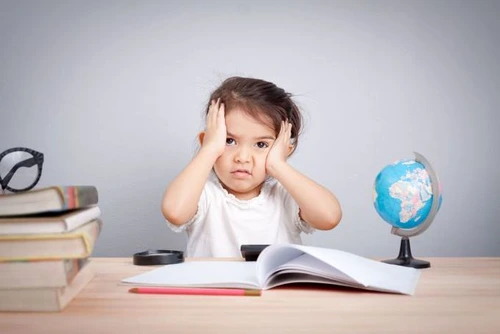
Until recently, the disorder called ADHD was a real scare for parents, especially when the child showed clear evidence of inattention or hyperactivity even during study hours at school. Now, with the help of specialists, things are much clearer and this behavior can be modified in such a way that it does not affect the young person’s evolution in society. We managed to clarify several aspects related to this worrying disorder in a dialogue with a specialist in the field, Mrs. Dr. Anca Cerlincă, a doctor at the Bellanima clinic.
Let’s understand the causes of ADHD
One thing that must be emphasized from the very beginning is that related to the causes of ADHD. Attention deficit hyperkinetic disorder is a disorder with biological bases. “Certain brain structures, more specifically those responsible for controlling attention and activity, have different development times compared to the results of children without this disorder,” says Dr. Anca Cerlincă. Specialists have identified possible causal factors and possible risk factors. For example, the identified risk factors include premature birth, prenatal exposure to alcohol or tobacco. Also, in most cases (1 out of 4), investigating the child’s history, we discover a family member with similar traits.
It should also be said that the studies suggest a worldwide prevalence of ADHD in children and adolescents somewhere between 5% and 7%, according to the applied methodology as well as the differences in the diagnostic approaches bringing these differences in the results.
How do we recognize ADHD?
Not all of the child’s behaviors should be taken as signs of ADHD. Doctor Anca Cerlincă explains: “The symptoms of ADHD are divided into 3 major categories: inattention, hyperactivity and impulsivity. Children with ADHD can present symptoms from 1, 2 or even all categories. Children with symptoms in the category of inattention have difficulties in concentrating and maintaining attention during the task. Hyperactivity can translate into the child’s inability to sit still. The hyperactive child often fumbles, climbs, jumps even when it is desirable to be quiet, and impulsive children may act before thinking. Often these children will interrupt the discussions or activities of others.” Regarding attention, however, “it is normal for the little ones to be distractible, impatient and impulsive. This does not always mean the presence of hyperkinetic disorder. Attention, behavior appropriate to social norms and self-control develop gradually as the child grows, with the help of parents and educators. But some children do not seem to improve these skills. If these problems continue and start to cause difficulties at school or with friends, it could be ADHD”, emphasizes the specialist. “At the same time, in general, the symptoms become evident with the entry into the primary education cycle, when the requirements become more demanding, and the rules of discipline more strict (staying on the bench, maintaining silence during class)”.
ADHD and school
“Students who suffer from such disorders are often labeled as problem children, although their actions are not malicious. Then it becomes obvious that this pattern of behavior affects the functionality and the establishment of healthy relationships with the age group, and ignoring these difficulties can have consequences in the future”. In general, teachers are the ones who flag behavior problems, often urging parents to seek specialized help. The secret, however, is a collaboration between all parties involved. “Ideal would be a cooperation between parents, therapist and teaching staff, as certain measures are indicated for the school environment to help the child reach its maximum potential”, emphasizes the specialist Dr. Anca Cerlincă. The solution adopted by some educational units is the famous moving of the child from one school to another. “But this remains an option that is resorted to in extreme cases, only after all other solutions have been exhausted,” warns Dr. Anca Cerlincă.
“Untreated, attention deficit hyperkinetic disorder can impact the most important areas of a child’s life: school, friends, family relationships. Attention deficit often translates in the school environment into low grades, failures and frustrations that could lower the child’s self-esteem. Hyperkinetic behavior attracts the unfortunate labels of “problem child”, “naughty child” which again leaves a strong imprint on the subsequent behavioral evolution. Therefore, it matters a lot for the child’s development, how these events are managed”, says the specialist.
boys or girls?
But who does ADHD prefer? Doctor Anca Cerlincă explains to us: “Male patients predominantly present hyperkinetic and impulsive symptoms. This pattern of behavior is more annoying, and therefore easier to notice. Consequently, the addressability for this pattern of behavior is higher than for the symptomatology of inattention, which is often ignored or justified in other ways”. “Studies carried out in clinical samples revealed a boy-girl ratio of 4:1, while studies carried out in the general population revealed a ratio of 2:1. Which suggests a lower level of addressability in the case of hyperkinetic disorder with attention deficit in the case of girls”, concludes the doctor.
There are solutions, we just have to turn to specialists
There are several treatment options for ADHD. “The decision is made depending on the degree of damage, but also on the parents’ preference. The first option is behavioral therapy”, the doctor tells us. This type of therapy involves the creation and implementation of a system of rewards and consequences that lead to the modification of certain target behaviors. The doctor Anca Cerlincă, however, points out that the involvement of parents in the therapeutic program is very important. They will be trained how to manage problematic behaviors, and under the coordination of their therapist, they will be the ones who will implement a structured program. “If the impairment is severe (the child fails to keep up with peers, relationships with the age group are affected), which would put the child at risk for other disorders, it is decided to introduce a pharmacological treatment into the intervention plan. The right treatment leads to the improvement of the symptoms of hyperkinetic disorder with attention deficit”, states the specialist. Doctor Anca Cerlincă also emphasizes the need to involve both parents and teachers. “The collaboration between them can help young children to manage their emotions and behavior in an appropriate way, and as they grow, they will manage to obtain a reasonable level of self-control”, points out the specialist.






































